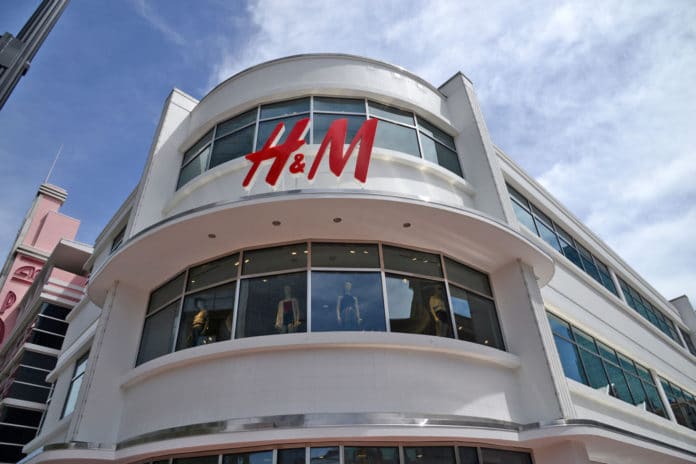H&M – Sundance Square
401 Commerce St.
sundancesquare.com/hm
The line started at midnight. Twelve hours later, the line had grown to more than 400 people, waiting outside the door for the grand opening of Sundance Square’s newest clothing store, H&M.
When the doors opened at noon on April 7, the crowd piled into the 31,000-square-foot building to explore four stories of shirts, pants, dresses and shoes from the Sweden-based retailer.
“They had a DJ and music playing and giveaways and promotions and things,” said Johnny Campbell, president and CEO of Sundance Square. “There’s no question that they were able to stir up some real excitement.”
The opening of H&M in Sundance Square comes at a time when online shopping is growing – exploding really – and many brick-and-mortar retailers are struggling to stay afloat. Macy’s, for example, will be shutting down 40 locations, according to The Washington Post. Kohl’s, too, plans to close 18 stores by June.
So why is H&M growing?
According to Stephen Coslik, chairman of the commercial real estate firm The Woodmont Co., the retailers that are thriving are using a technique known as “experiential shopping” – that is, putting less emphasis on sales alone and more emphasis on the customer just enjoying the feeling of being in the store.
“No longer is it just putting Levi’s on a shelf, expecting the consumer to come in,” Coslik said. “That still occurs, of course, but it’s more now about creating the experience for the consumer by the retailer for them to feel like it’s more than just shopping, but it’s shopping combining with real-life experience.”
At the Sundance Square H&M, the experience begins outside. From the street, people can see three stories of show windows with mannequins dressed in the latest styles. Inside, the merchandise is displayed on racks and shelves, as well as on mannequins standing on terraced platforms. A chandelier-like light fixture hangs from the ceiling and reaches down each floor below.
“It’s about feeling the energy and the colors and the excitement and the great design of the store that gives you the rest of that round experience,” Campbell said. “H&M is definitely one that has been pushing this.”
H&M isn’t the only store offering experiential shopping. IKEA, for example, is known for displaying its furniture in a room that could very well be a person’s room in real life. Urban Outfitters, such as the one on West Seventh Street, has a “funky” look with its rustic atmosphere, Coslik said.
But there’s more to creating a shopping experience than just store design and layout. Retailers also do well when they are constantly putting out new products. Nike, for example, is well-known for doing so, Coslik said.
Today’s culture emphasizes individuality, he said, so variety is key. Young people, especially, aren’t looking for “40 of the same styles or designs lined up.” Instead, they’re looking for things that are different from what their peers are wearing or using, he said.
In short, more styles; less stock. Not vice versa.
Another way to create a shopping experience is to incorporate technology with the customer’s visit to a physical store. Then there’s no longer a war between online and brick-and-mortar – it’s a marriage between the two, said Garrett Eastham, founder and chief data scientist at Edgecase. Edgecase is an analytics company that helps retailers understand customer data.
Home Depot, for example, has a smartphone app that can locate stores carrying the product a customer is looking for. When the customer gets inside the store, the app then helps the customer locate the aisle and bin where the product is located.
“Those that are getting it correct and making the most leaps are the ones that are recognizing that it’s not a battle between channels,” Eastham said. “The best ones are going to be where consumers want to augment what they love about the in-store experience with the access to online information.”
As far as where experiential shopping is headed, Coslik said he doesn’t know. What he does know, he said, is that retail is constantly changing, and the ones that do the best are the ones that change with the times.
“You have to be continually reinventing yourself and continually bringing new merchandise,” he said. “The best merchants, the best retailers, are those that can anticipate the changing taste of the consumer.”
The Case for J.C. Penney
The changing face of retail has become problematic for some of the more traditional big-name stores. One retailer who’s endured a long, storied struggle is Plano-based J.C. Penney Co., which announced in January 2015 that it would close 40 stores and cut about 2,250 jobs.
But the company is taking small steps to turn around. Now in the hands of new CEO Marvin Ellison, who took over in 2015, J.C. Penney’s is working to rebrand and revamp its online shopping as well as launch private brands that can’t be found at other retailers. Some of those new brands include Belle + Sky, which focuses on millennials, and The Boutique, a line for plus-size women.
J.C. Penney’s efforts have helped it pay more than half a billion dollars of debt in 2015, Ellison said. According to stock analyst The Motley Fool, J.C. Penney’s debt went from $5.6 billion in 2014 to about $4.8 billion this year.
“We’re not nearly where we want to be,” Ellison said. “But we’re heading in the right direction.” – Samantha Calimbahin






